In conversation with Gabriella Mason, BA (Hons) Illustration
Gabriella is in her final year at Norwich University of the Arts, where her work explores the representation of mental health through narrative illustration. She is also an officer helping to run the Student Union’s Yoga and Wellbeing Society, and we discuss how her creative practice and wider University experience has helped to manage and communicate topics around mental health.
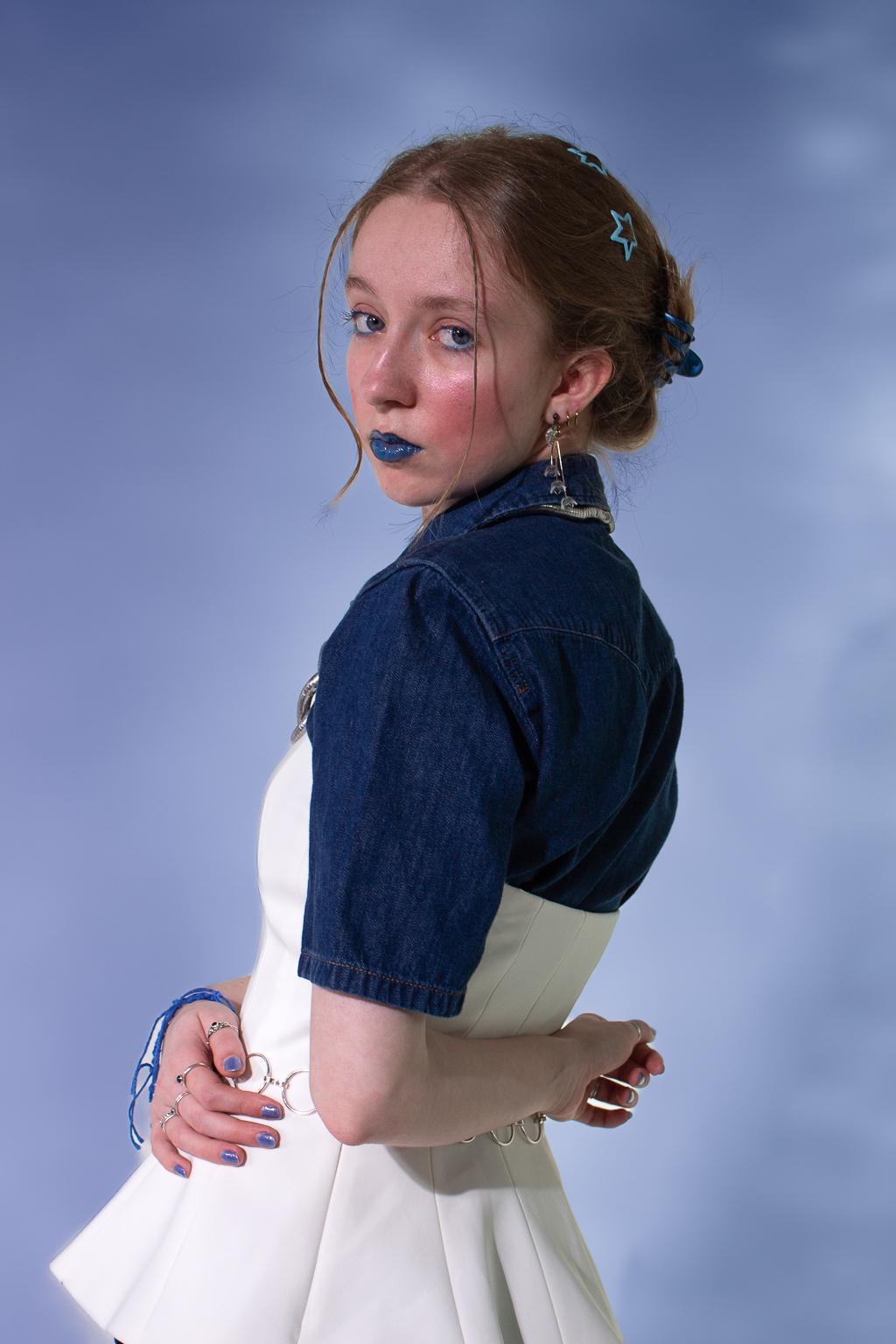
Header image by Macey Ledwich, BA (Hons) Fashion Communication and Promotion.
In Conversation
-
Can you tell us a little about yourself and your work?
I am currently in my final year at Norwich University of the Arts studying Illustration. My work is oriented around telling stories through a range of different methods such as zines, visual metaphors, animations, indie comics, and short stories. I like to explore the representation of mental health through narrative illustration, and how to communicate that in a clear and understandable way.
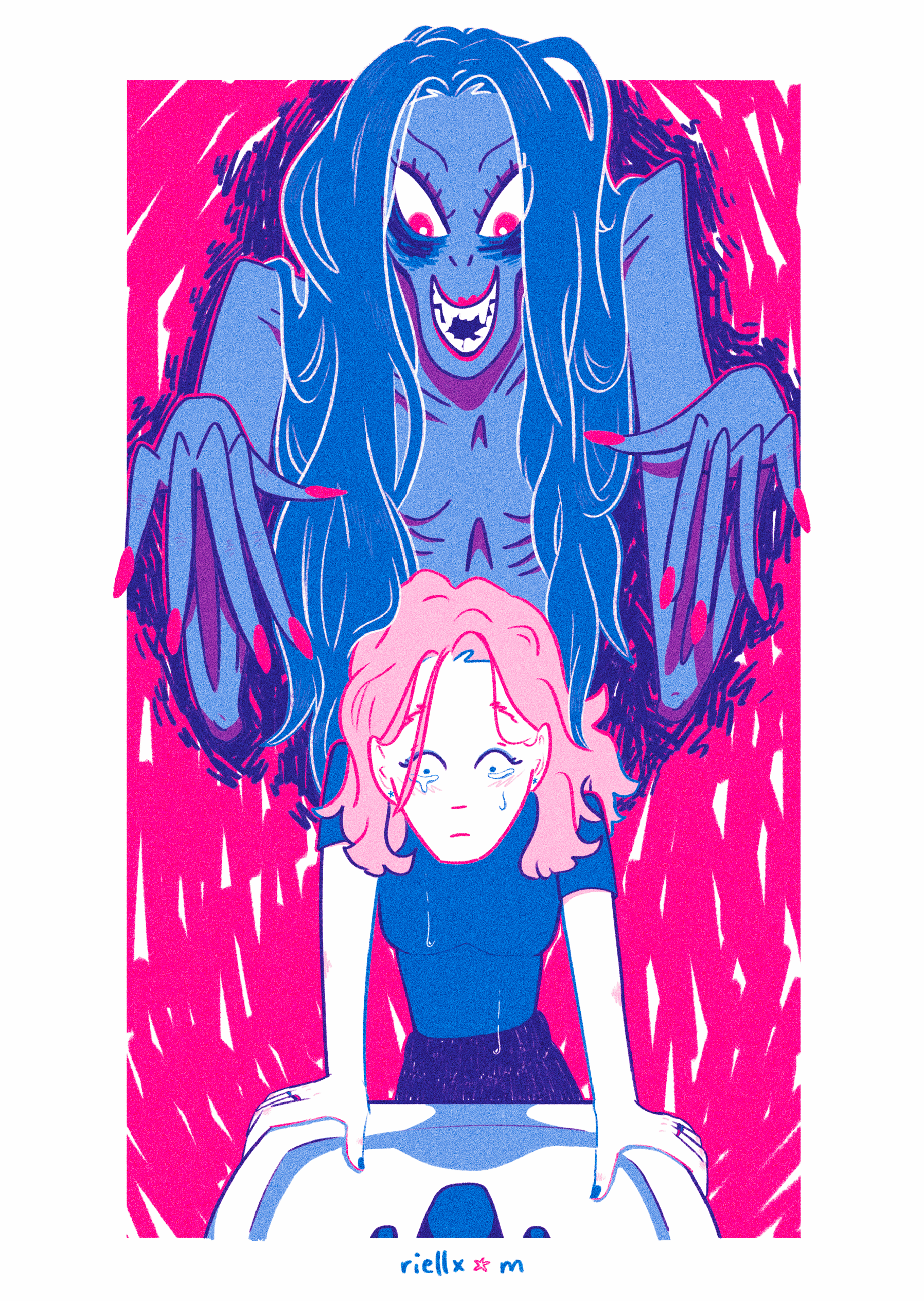
-
Tell us about your creative practice. What inspires you? What materials do you use?
My work is very much inspired by my interaction with day-to-day life, for example music, books or short comics about anxious bursts or spontaneous sadness. For example, my zine “Feelin’ Blue” is a short children’s book made to describe spontaneous sadness using the colours blue and yellow, this is available to read on my website or at the library. The works of Zoe Thorogood, Gemma Correll (a Norwich uni alumni) and Gretel Lusky are huge inspirations for my practice.
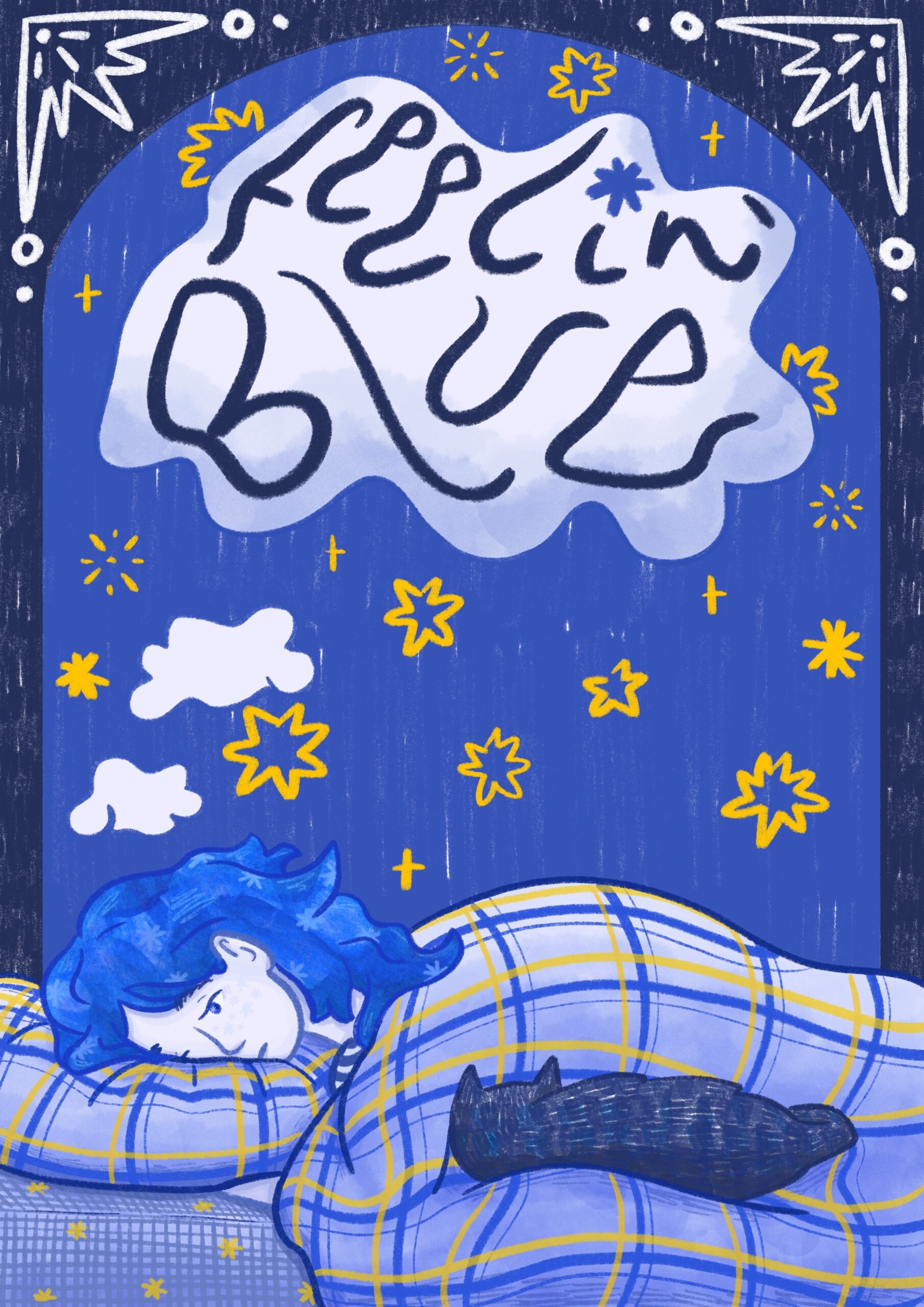
My practice is predominantly mixed media, but I specialise in observational art, watercolour, and digital art using the software Procreate. I like to mix traditional textures with my digital art to give the work more depth and familiarity.
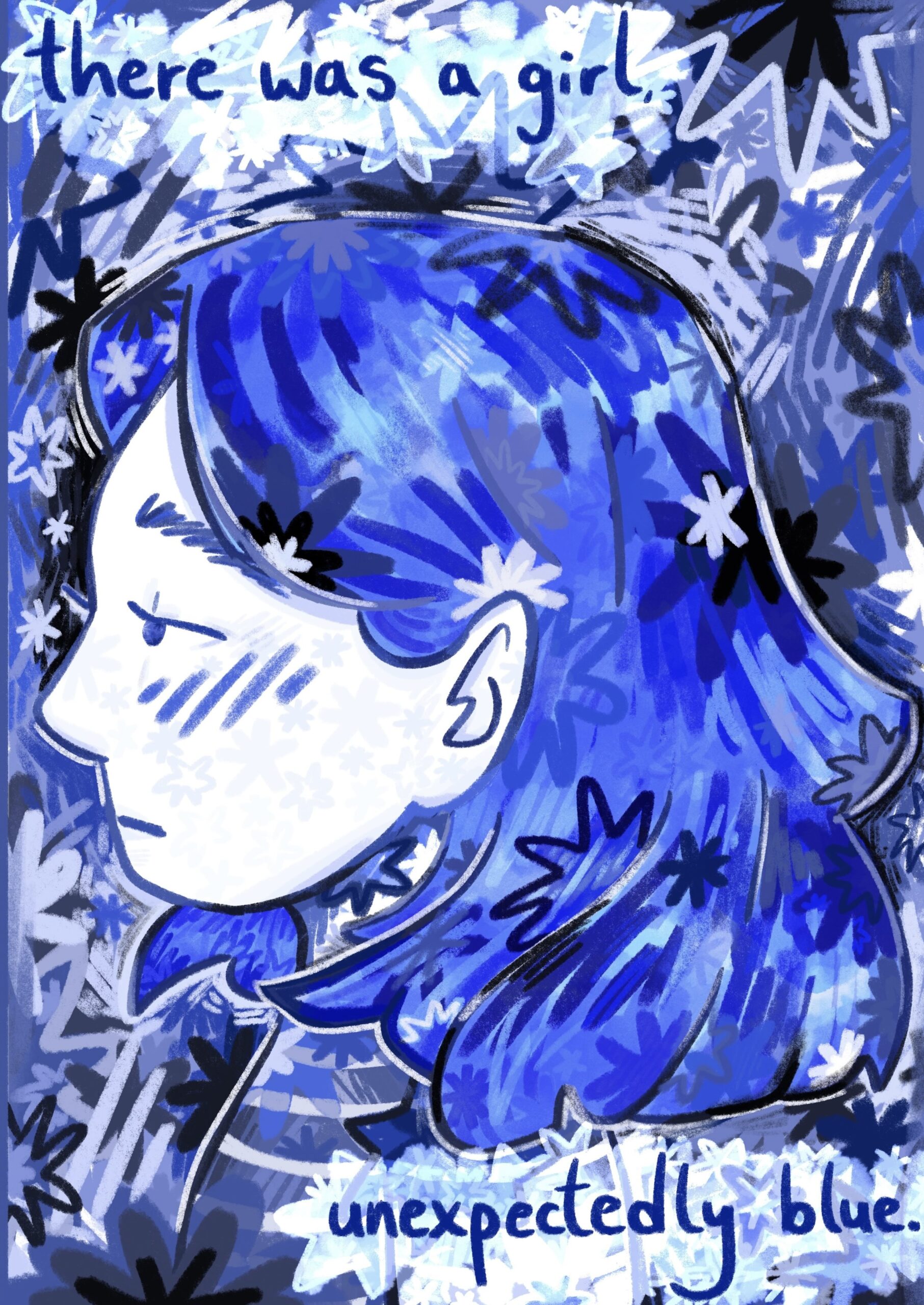
I have recently been able to experiment with the University risograph printer in our Bank Plain building. This allows me to explore the layering of colours quickly without having to go through the many steps of screen printing. From this I have created multiple copies of a comic strip, a poster and a zine.
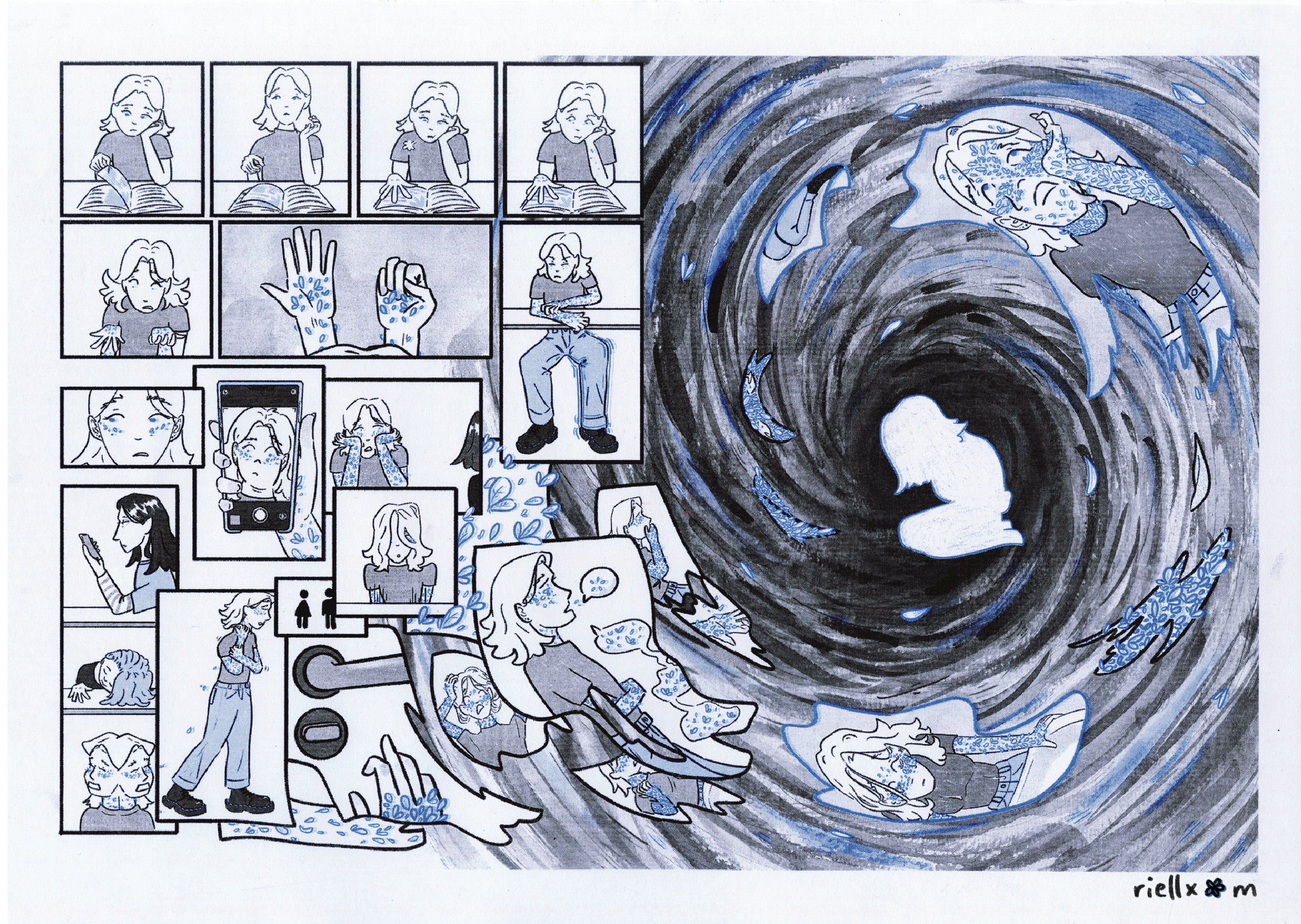
I’ve made many zines depicting topics of mental health; these are all hand bound and printed at the Guntons print labs. I’m still amazed by the rapid dual saddle stapler as it saves me so much time in preparing zines to sell at markets. All five examples of my zines are also available to read in the library’s extensive zine collection.
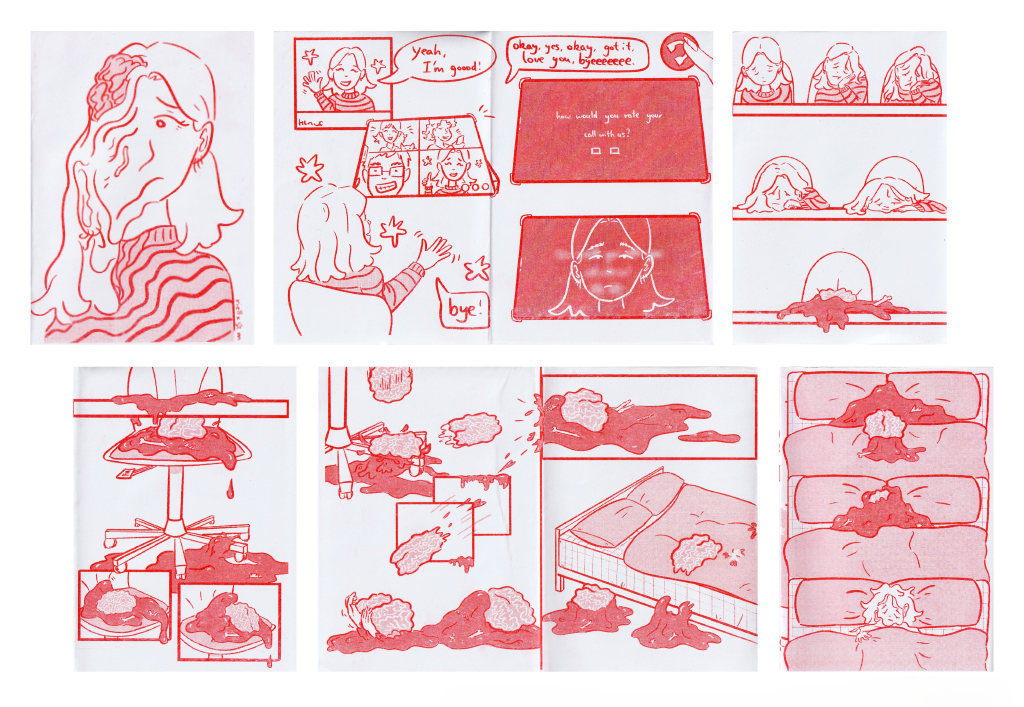
-
Is there a connection between your practice and your mental health?
Out of my works produced at uni, I am much prouder of the briefs relating to more personal topics than the ones I couldn’t connect with as easily. It’s important in the illustration industry to try any brief you’re given, however when I can connect with the topic, the work is more fun and therefore more rewarding. I struggle creating work that I can’t relate or see myself within, but I believe this is common for many artists.
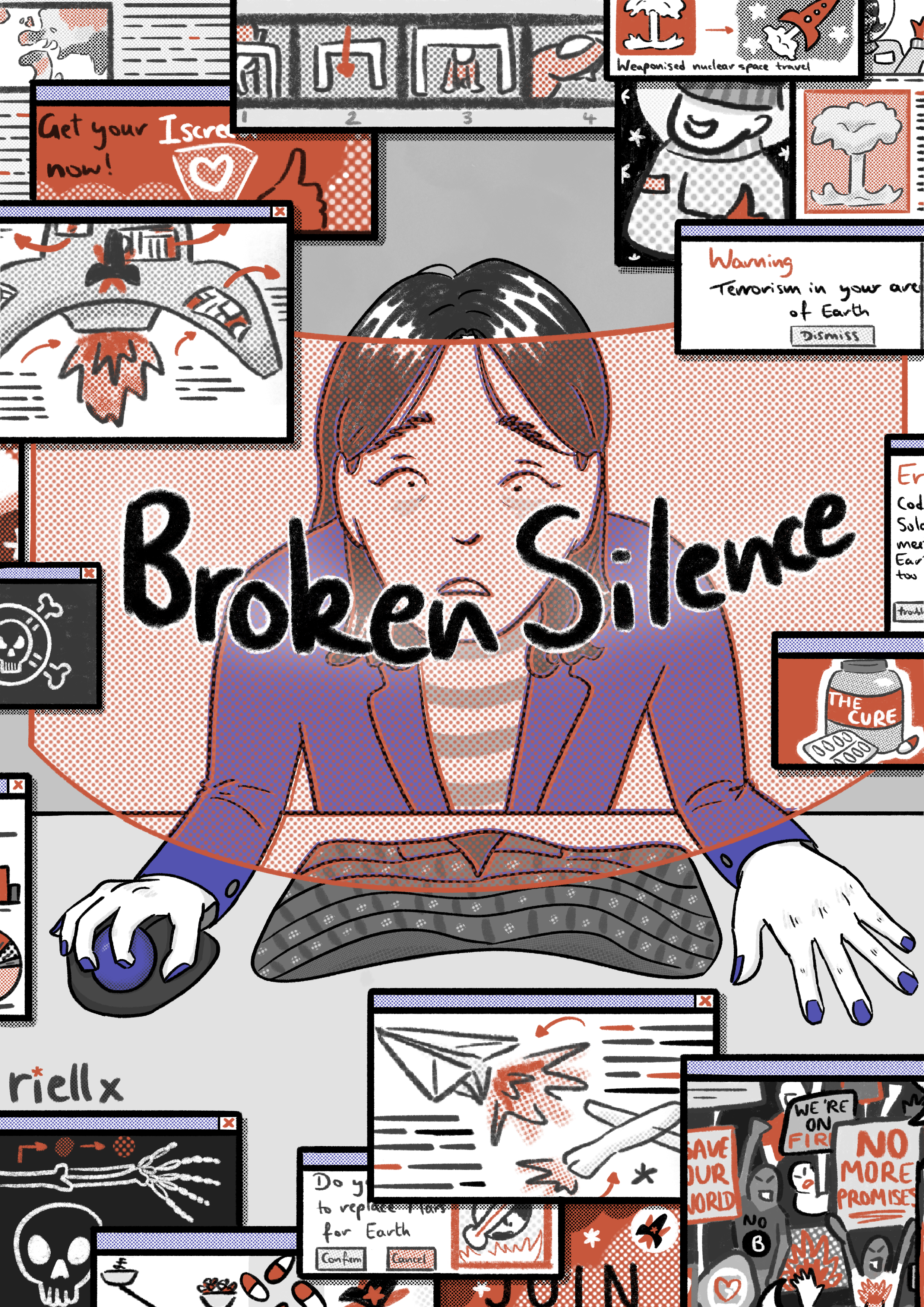
-
How has your practice helped you manage your mental health?
I find my process of doodling comics very therapeutic, as when my emotions seem too much or confusing I can translate them into a medium that makes sense to me, like comics and graphic novels. It puts my problems into a fictional setting that I can interact with from a distance. This process of creating a narrative also forces me to sort through my worries and feelings about a certain topic.
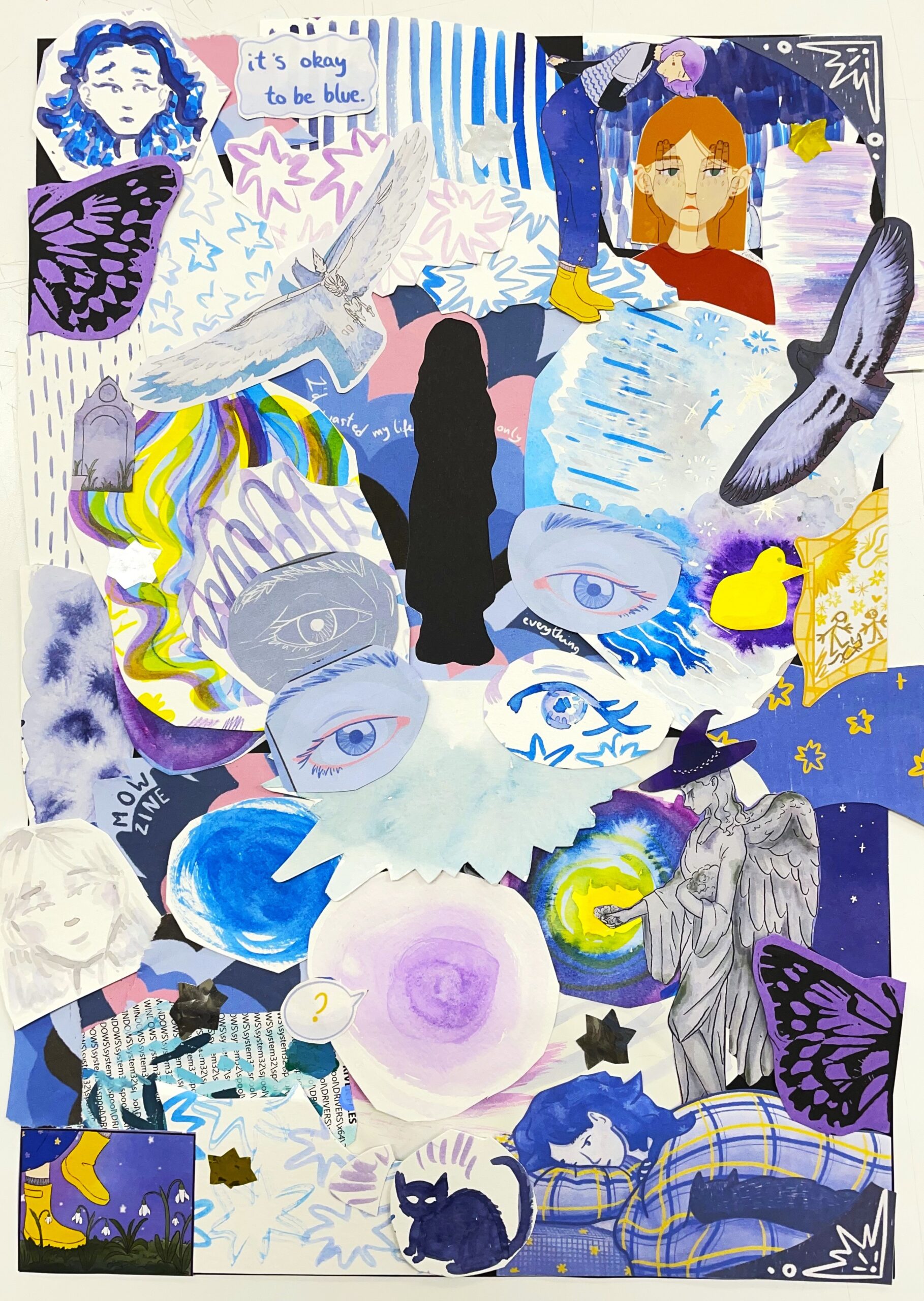
-
Has your wider university experience also had an effect on this?
Since coming to university, I have also found other therapeutic activities that help ease my anxiety and stress. One of which is seeing my friends on my course, meeting with them is really chill and they’re all so understanding and share the best advice. I’ve never felt so welcomed and myself than with them. We also play Dungeons and Dragons fortnightly which has been a great escape into a really imaginative fictional world.
Another activity is yoga – I am one of three officers that run the Student Union’s Yoga and Wellbeing Society. This can sometimes be a little stressful however it is very rewarding. The classes are really peaceful, and all of our members are lovely and come to yoga weekly. Being part of this community has meant meeting people across courses and years, this has led to collaborations and jobs within the uni. Our weekly classes help to destress my brain amongst a busy week of studies.
Finally, I’ve had the opportunity to share my work with many like minded artists. This is greatly rewarding as you can discuss your processes with people who understand and can share useful feedback. Art markets are a great place to support and connect with local artists, whilst also networking and getting your art seen. Furthermore, the process of having your art professionally printed, bought, and hopefully appreciated and understood by others is very rewarding.
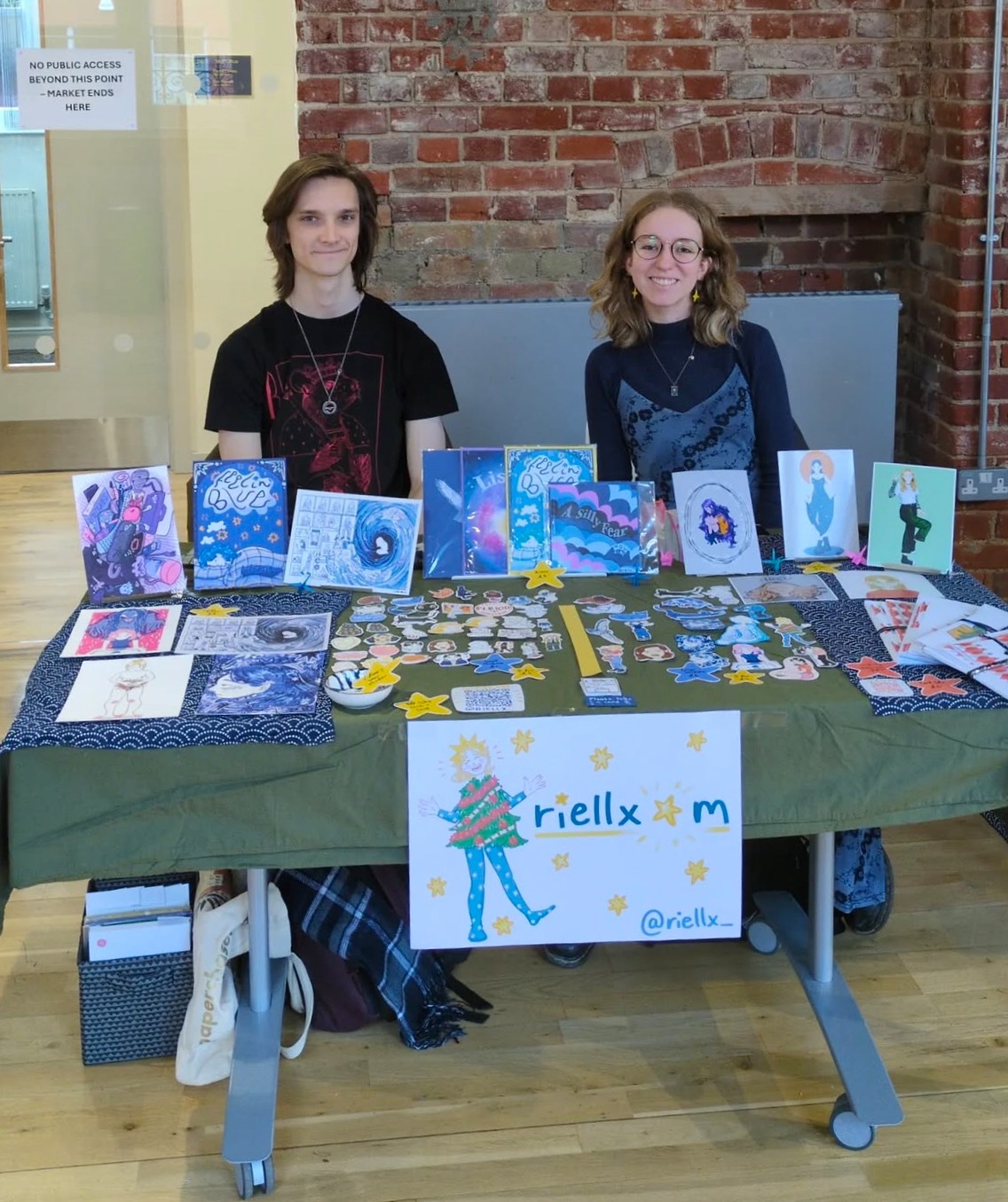
-
What’s next for you, both personally and professionally?
Being in third year has meant I have had the chance to show my work to industry professionals and visiting lecturers. Their feedback has often reflected that I am very capable of capturing the feeling of mental health struggles on a very emotive and detailed level. Their advice has been to share my work with mental health charities and awareness groups, in hopes they will see my work has potential to be used to help. After graduation I hope to find work experience in Sheffield and to continue pursuing my art career. I personally would like my art to comfort and be relatable to those suffering with depression or anxiety. And for those who aren’t suffering, I want to help them understand and sympathise with the discomfort.
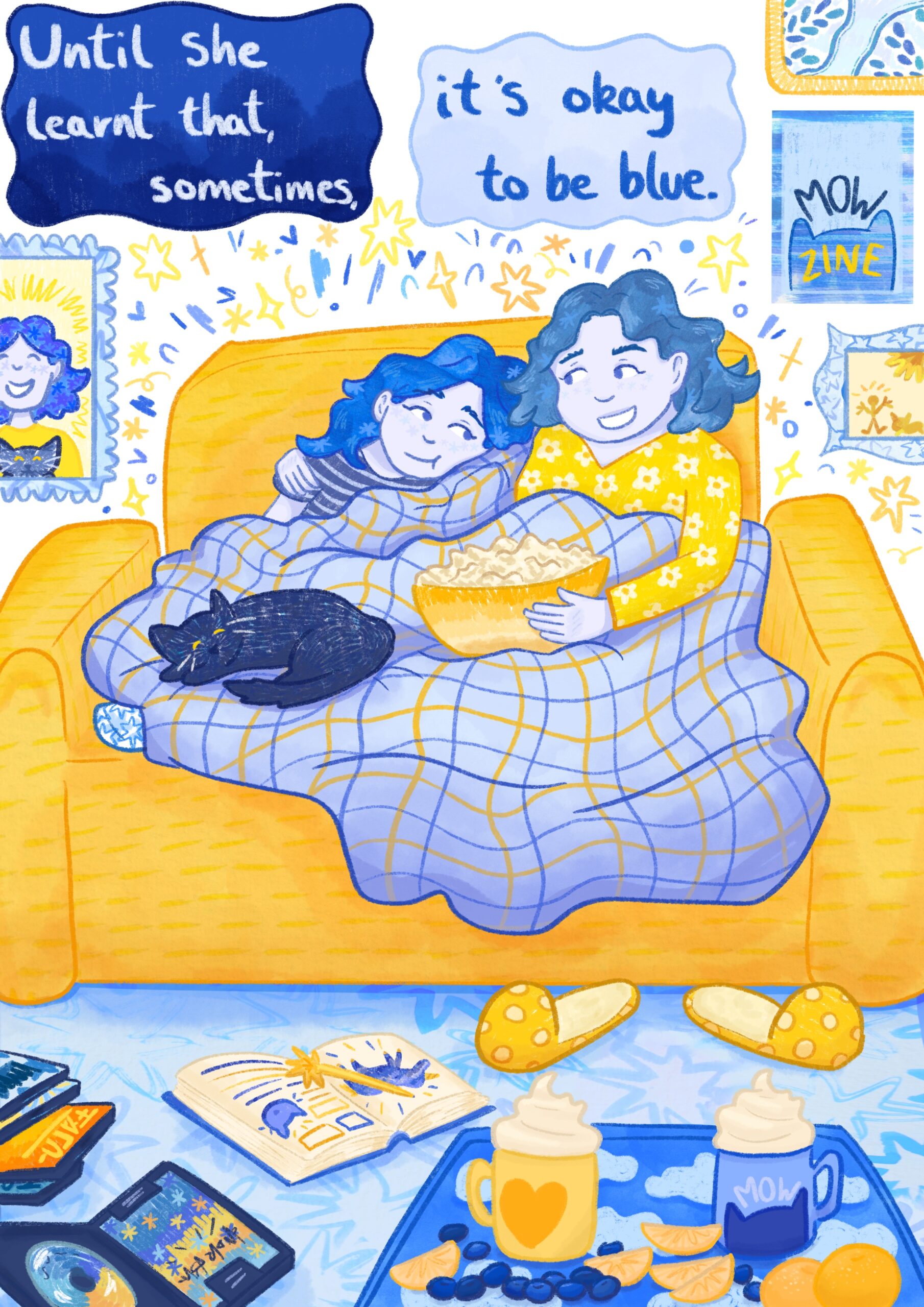
To find out more about Gabriella’s work, take a look at her website or Instagram.
Other interviews
-
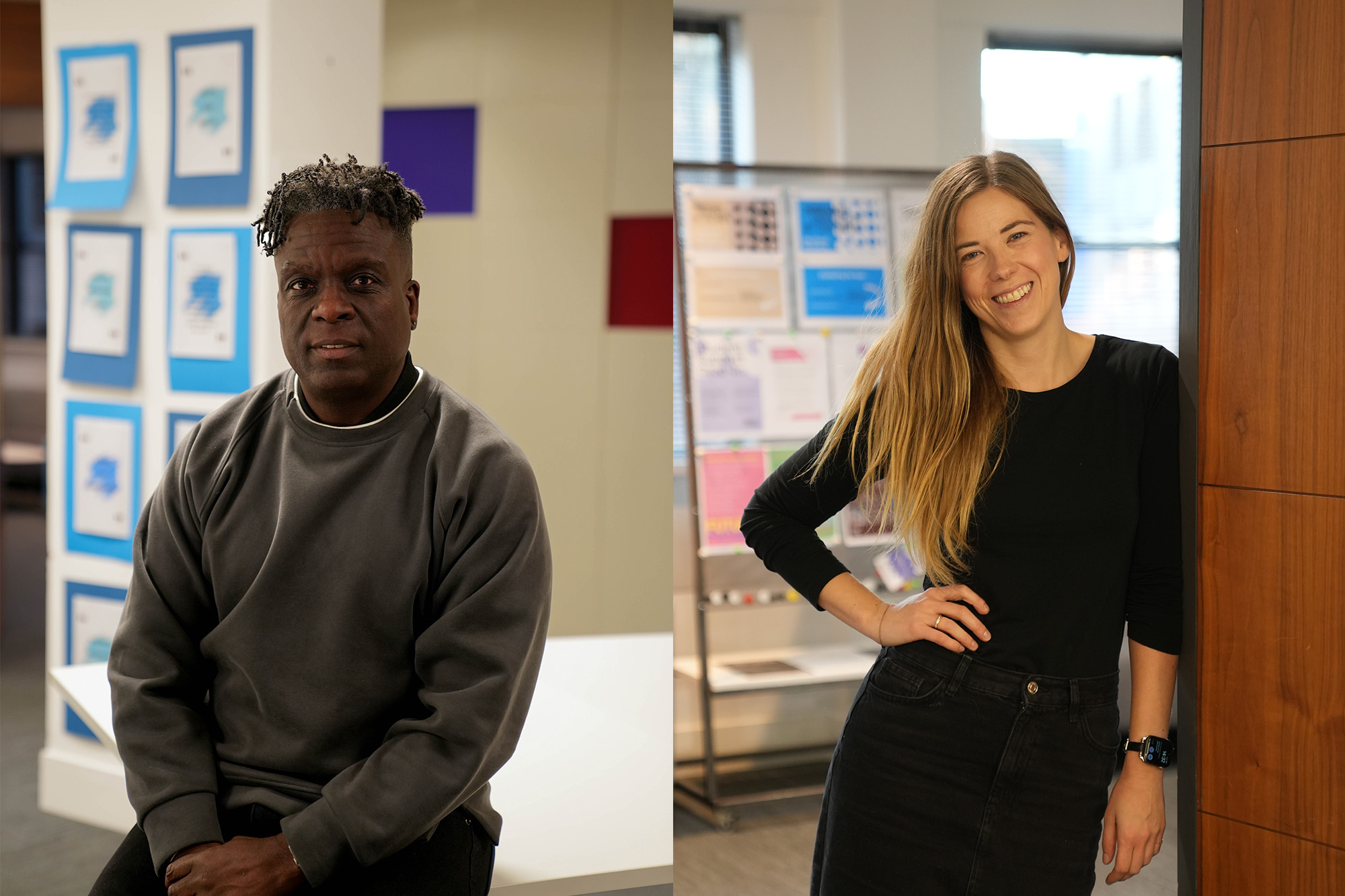
In conversation with Norwich’s newest lecturers in Marketing and Business Management
-
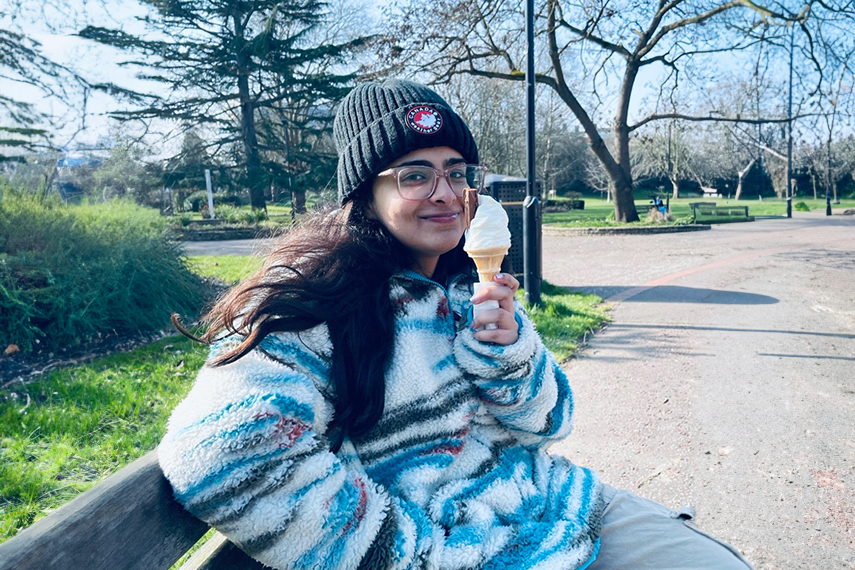
Dear future international students – Diya Vaya, BA (Hons) Film and Moving Image Production
-
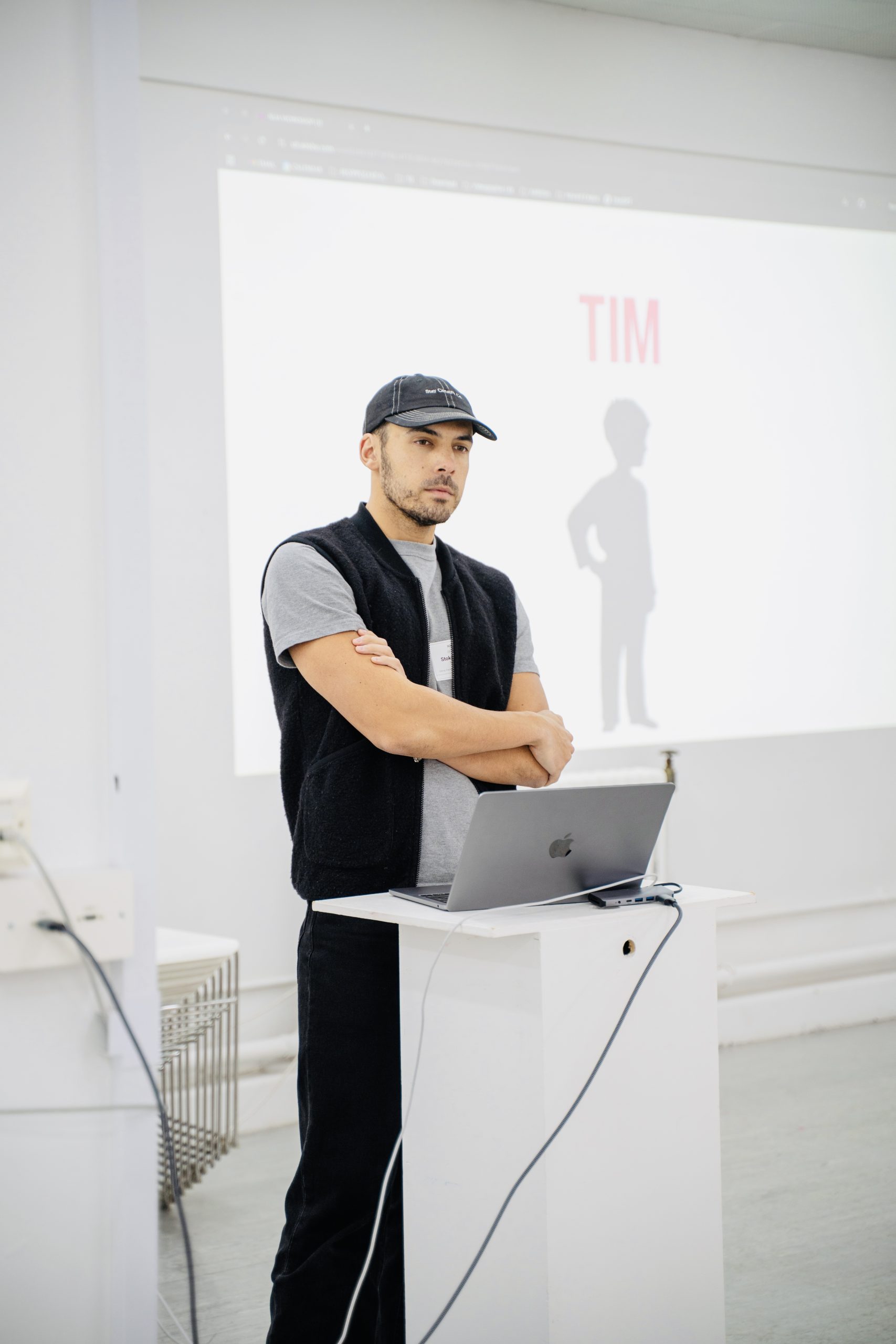
Inside Interchange Week with Stokely Howard of Trendy Grandad
-

Shape Shift Converse Rework: Authentic co-creation of art in mental health settings
-
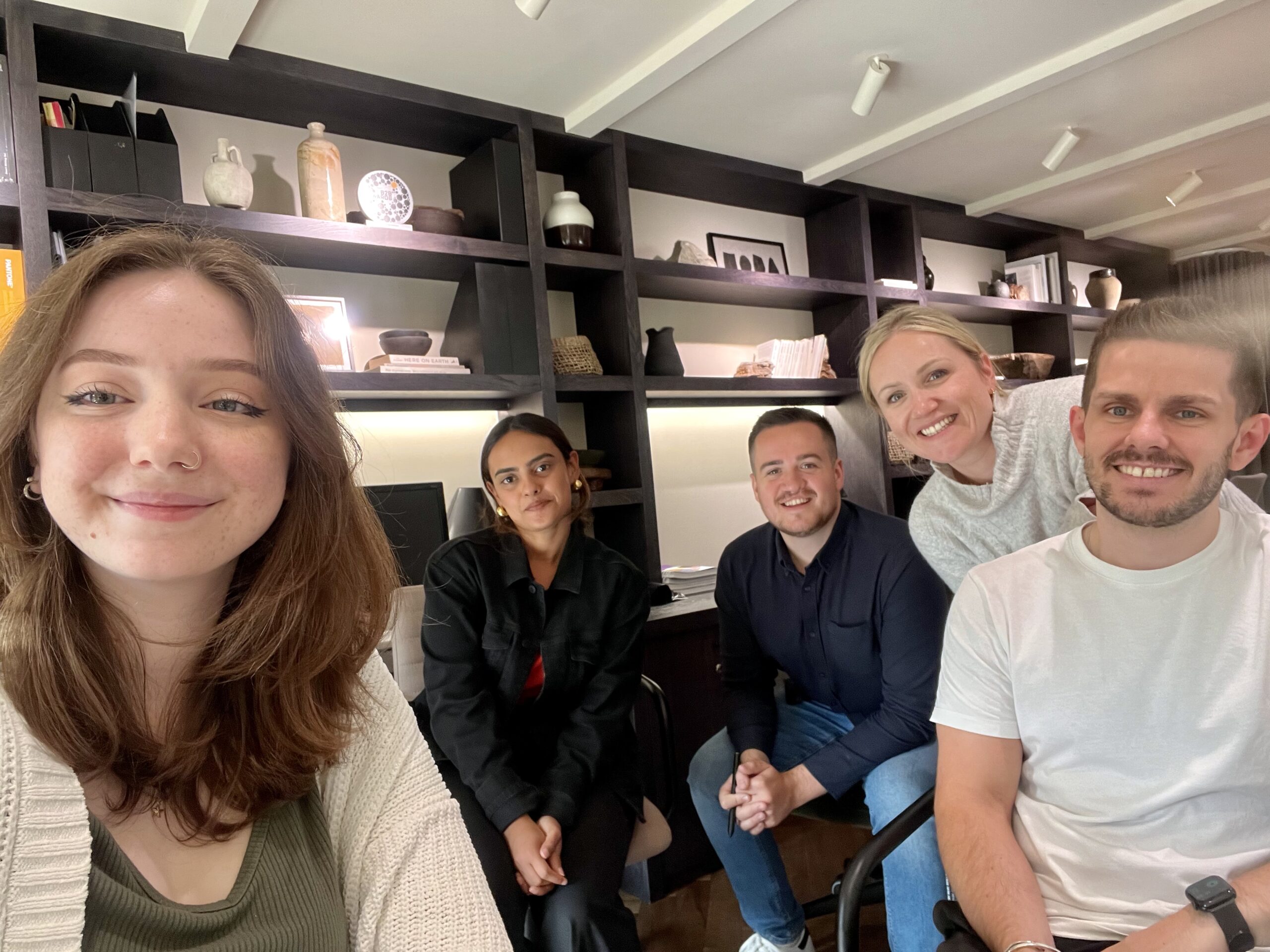
In conversation with Cassie Muskett, BA (Hons) Graphic Communication
-
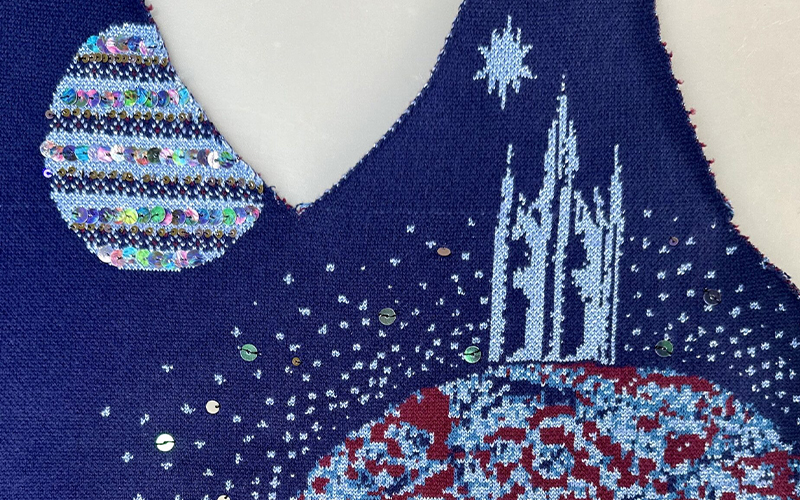
Embracing AI in Textile Design: A journey of creativity and collaboration
-
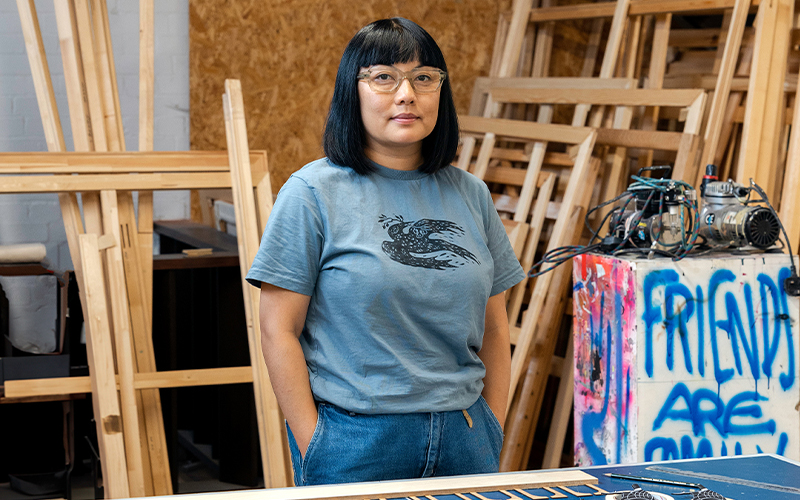
In conversation with: Alice Lee, BA (Hons) Illustration lecturer
-
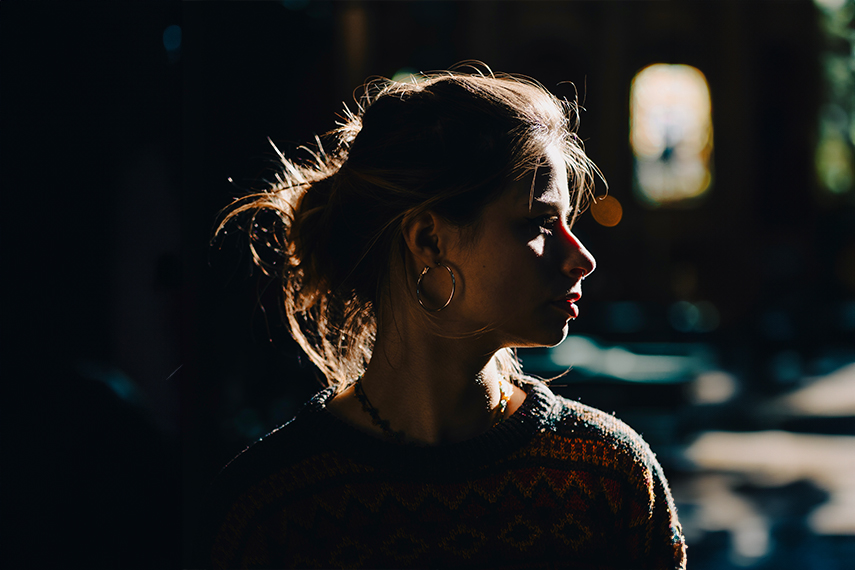
In conversation with: Lucien Kelman, BA (Hons) Animation
-
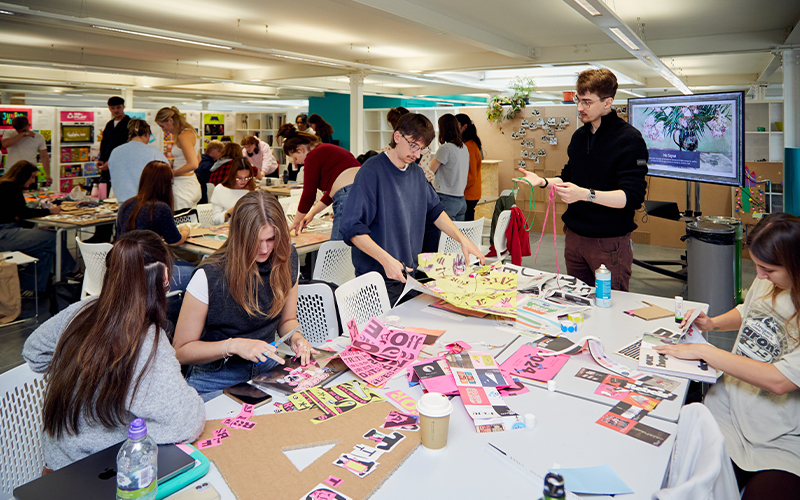
In conversation with: Sam Butler, BA (Hons) Graphic Communication
-
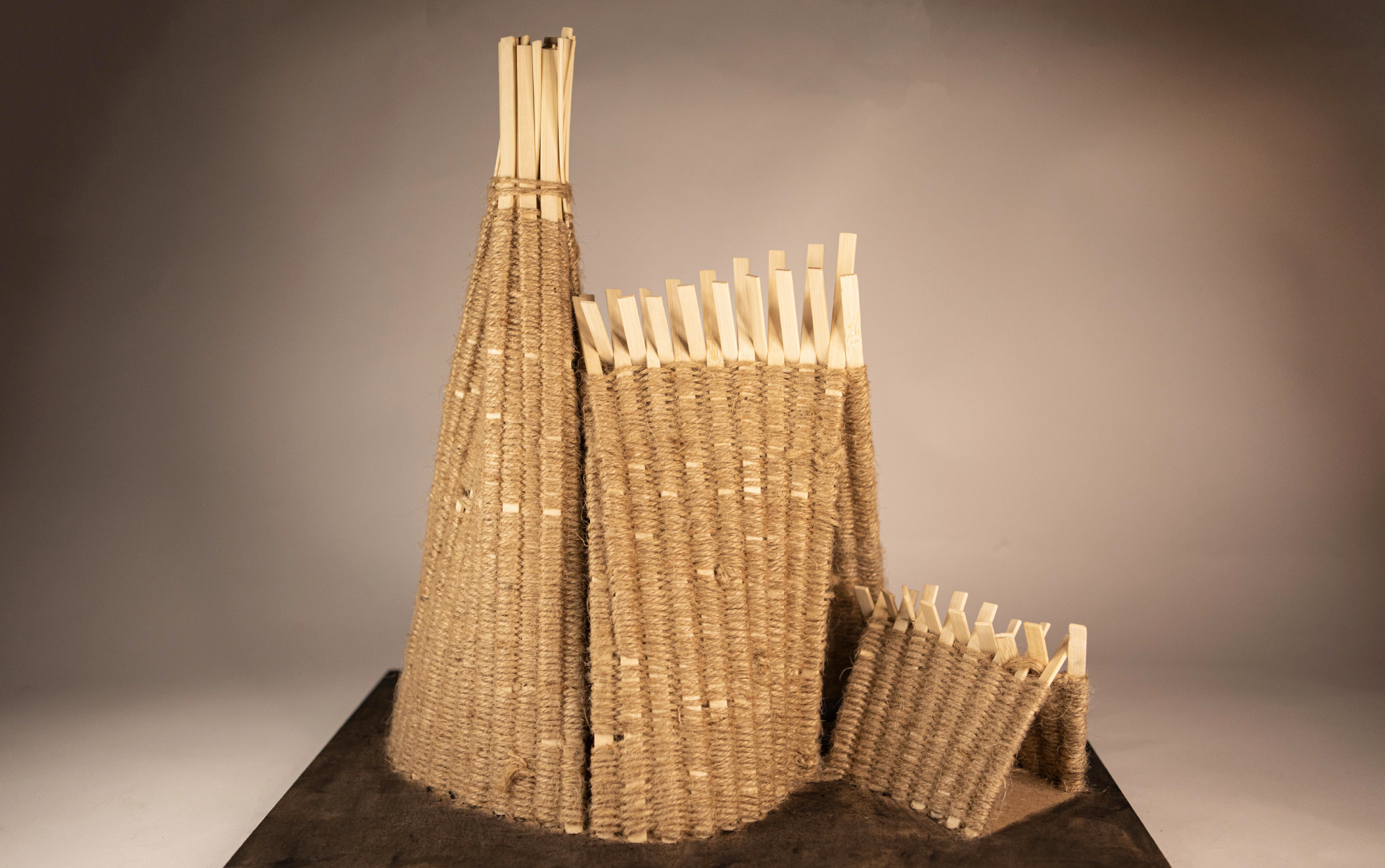
In conversation with: Tracey Lin, BA (Hons) Architecture student
-
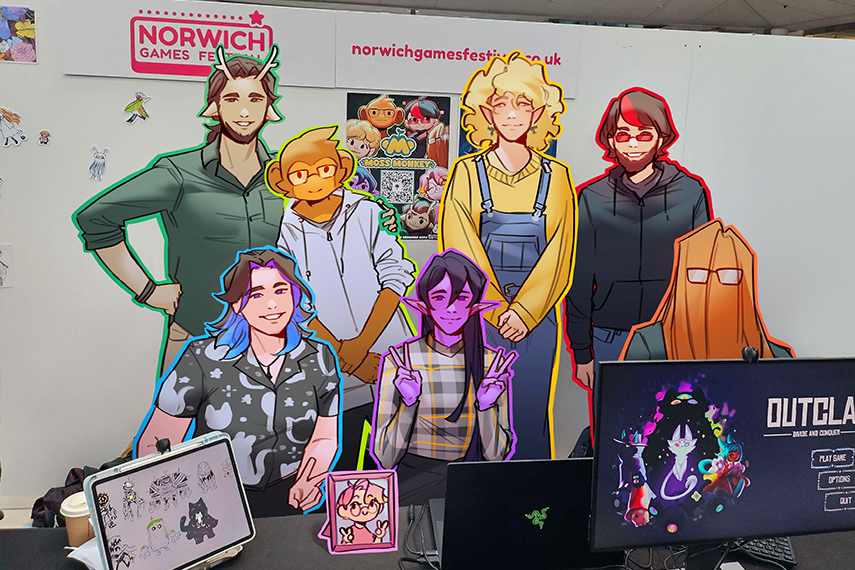
In conversation with: Iz Head, BA (Hons) Games Art and Design
-
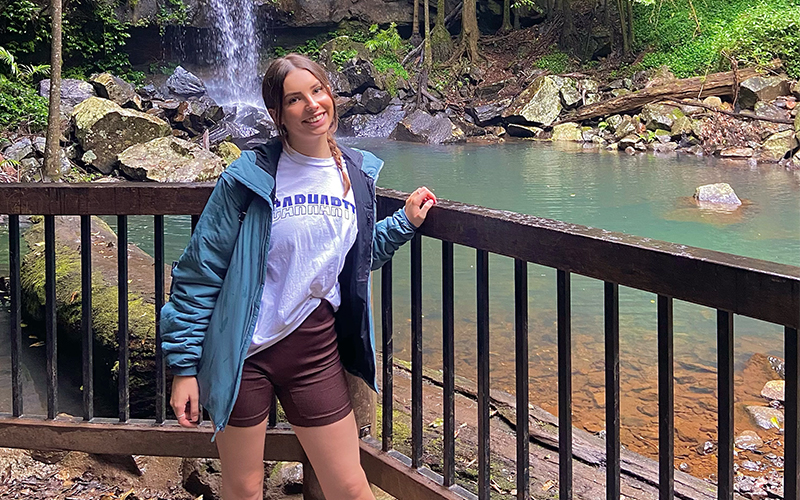
In conversation with: Clara Barton, BSc (Hons) User Experience Design student